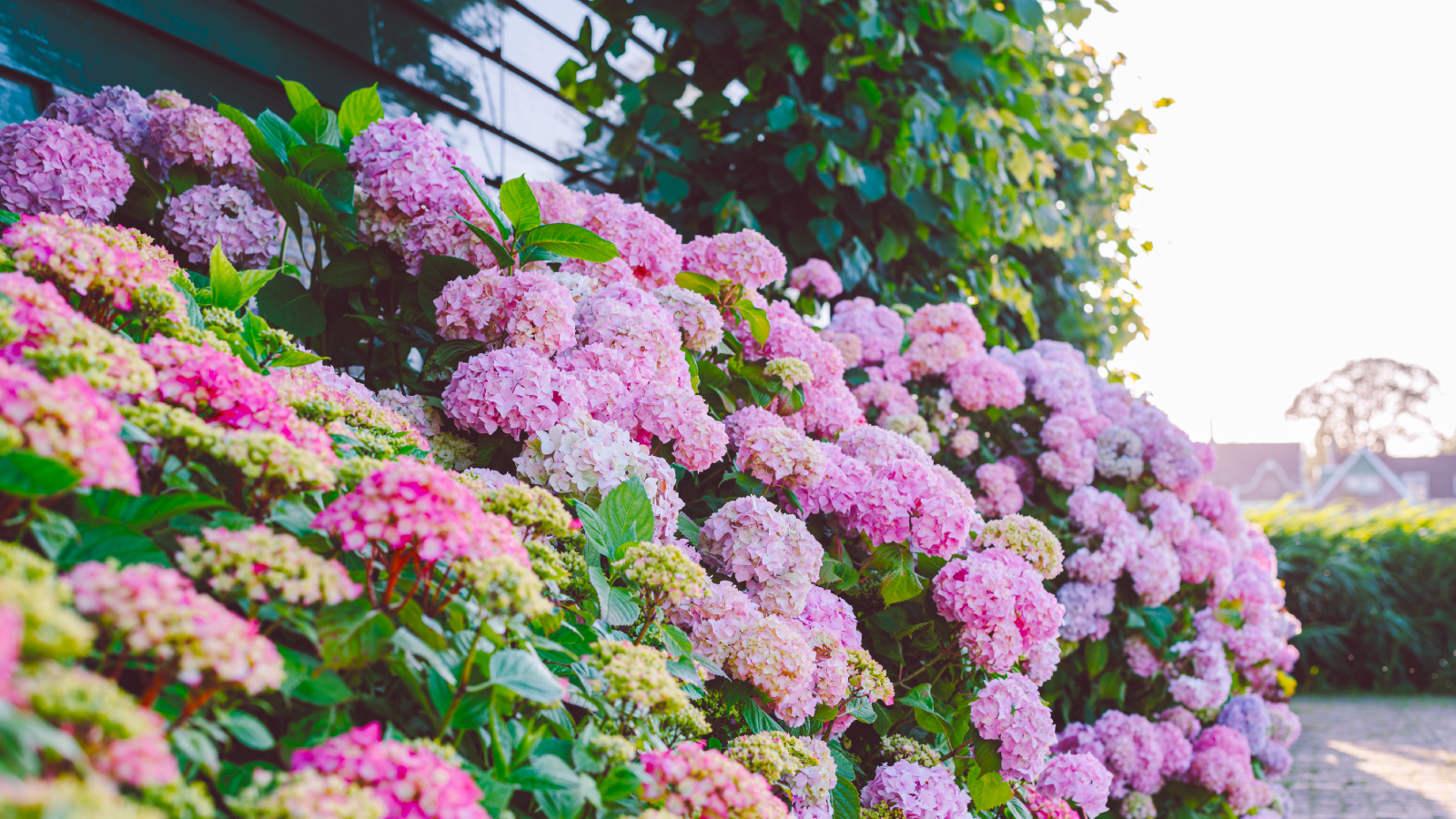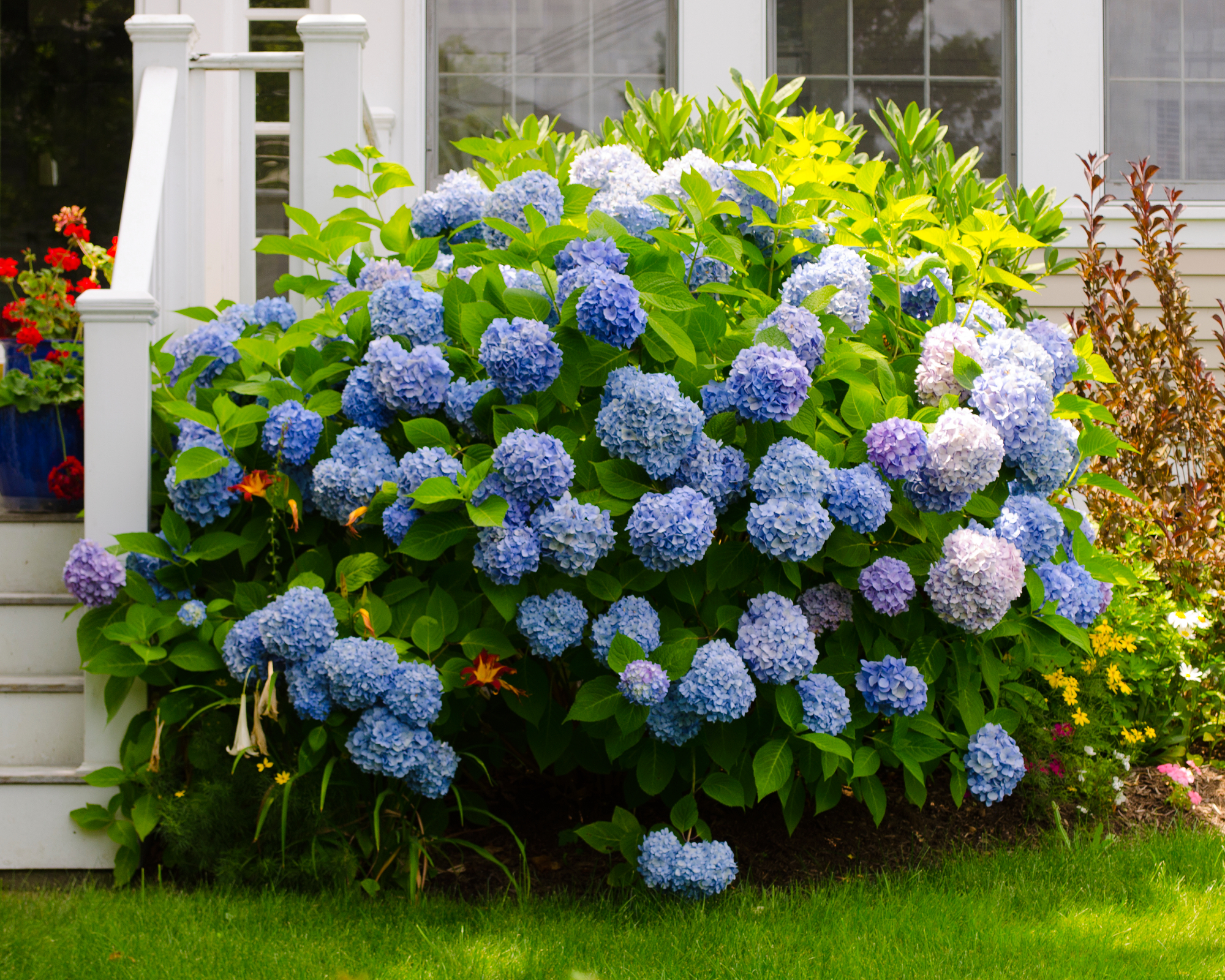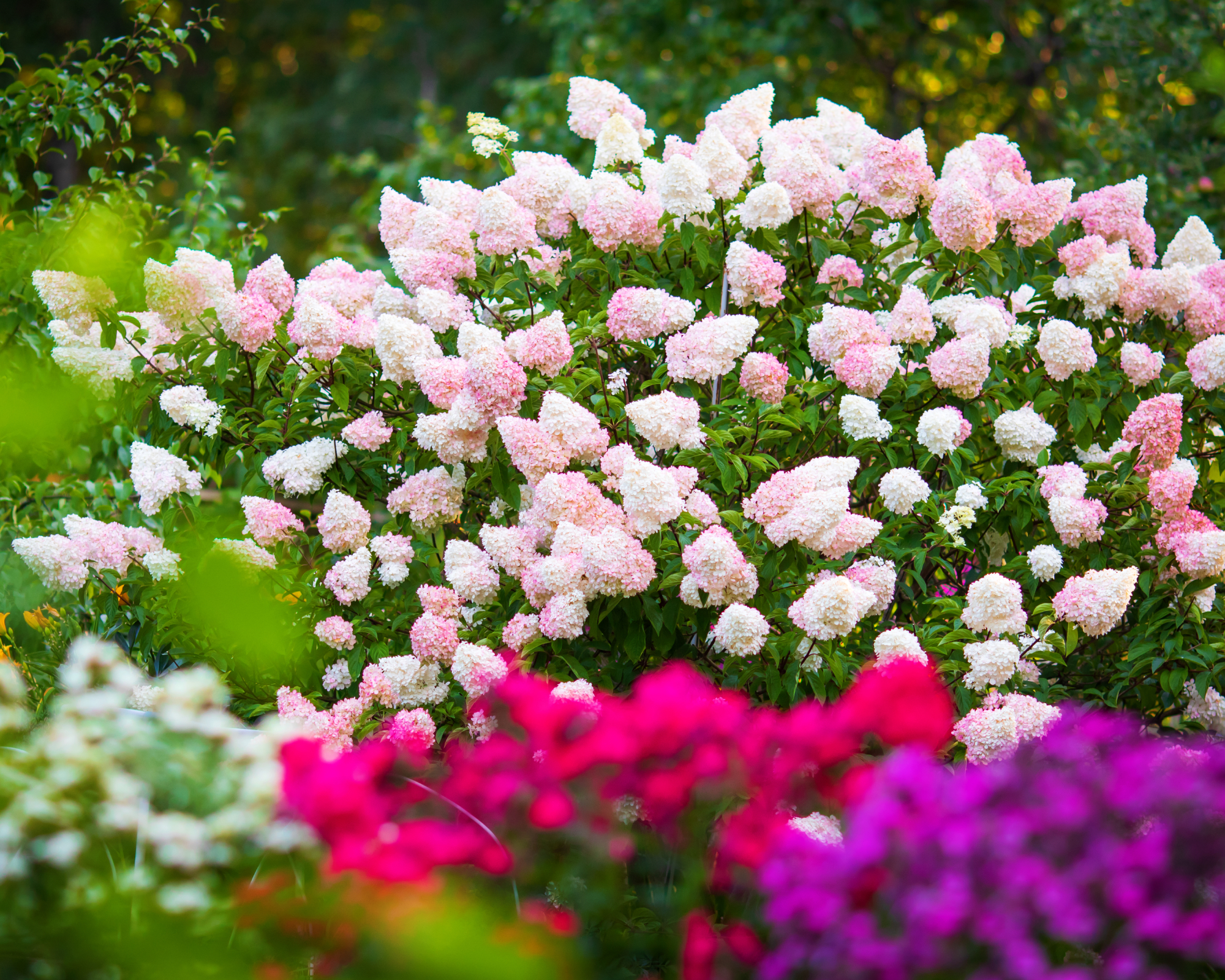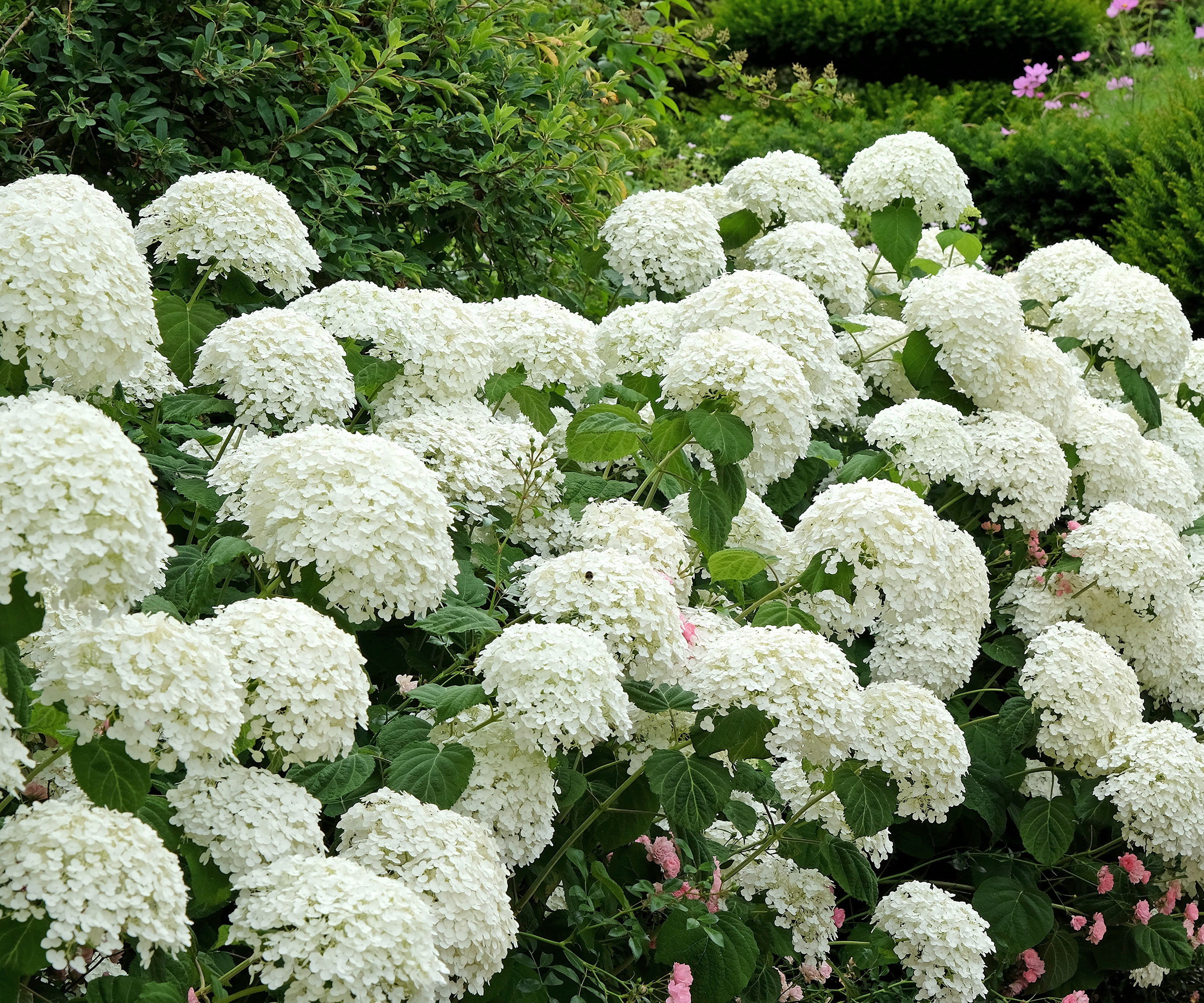Where To Plant Hydrangeas So They Thrive For Years – Plus, The Best Types For Tough Spots
Deciding where to plant hydrangeas can mean the difference between long-lasting shrubs and struggling plants. Learn where to plant them for the best results.


Laura Walters
If you love hydrangeas and would like to grow some of your own, one of the first issues you need to address is where to plant hydrangeas so they’ll thrive. The best place to plant hydrangeas will vary depending on the variety you want to grow and where you live.
Before you purchase a plant, it is best to survey your landscape, do some research on what type of shrub you want to grow, and look for inspiration about unique ways to use hydrangeas in the landscape. This will ensure your plant is happy in its new home and it will reward you with big, beautiful blooms for many years.
Our hydrangea experts have some tips to help you pick the best spot to plant your hydrangea. Read on for pro advice before you pick up that shovel to plant your shrub.
Why Choosing the Right Location Is Important
You’ve probably heard the real estate adage of “location, location, location.” This means that location is of great importance with any real estate purchase and the same holds true when locating your plants. The gardening version of this advice is “right plant, right place.”
Choosing the correct plant and the correct location for that particular species is important because different types of hydrangeas have different light, soil, water, and nutritional needs. Some are similar and some are not at all.
The best way to grow hydrangeas that are happy and healthy is to give them what they want, including a proper location in the garden. If you want your plants to grow and produce flowers, you need to acknowledge their growing needs—and picking a proper location is one of the most crucial factors.

Where Can You Grow Hydrangeas?
In the case of hydrangeas, most varieties prefer partial shade. Though there are other types of hydrangeas that thrive in sun. Panicle hydrangeas prefer full sun and oakleaf hydrangeas tolerate it as well, especially in cooler climes.
Sign up for the Gardening Know How newsletter today and receive a free copy of our e-book "How to Grow Delicious Tomatoes".
Most varieties of hydrangeas also prefer acidic soil, or one that is lower in pH, although they can tolerate soils with a higher pH as well. If you want to change the color of hydrangea blooms, that depends on the soil pH.
For example, if you’re dead set on blue hydrangeas, then you need to plant your hydrangea in a location with acidic soil. If you want pink hydrangeas, plant your shrub somewhere with neutral to basic soil.

Where to Plant Hydrangeas So They Thrive
The east side of your home is often touted as the best place to plant hydrangeas. This is because it gets morning sun followed by afternoon shade when the sun is at its zenith. However, you should plant panicle hydrangeas in an area that receives at least six hours of full sun per day.
Plant hydrangeas in soil that is well-draining, fertile, and acidic (unless you want pink blooms). Make sure to choose a variety that works for your USDA growing zone. Most hydrangeas are fairly winter hardy, but there are some that will suffer from winter kill and a loss of flowers from freezing temperatures so choosing the best hydrangea for your zone is crucial.
Bigleaf hydrangeas, which includes both mophead hydrangeas and lacecap hydrangeas, are less tolerant of cold. If you live in growing zone 6 or cooler, plant bigleaf hydrangeas in a sheltered spot to help protect from cold damage that can lead to your hydrangea not blooming.
Best Hydrangeas for Difficult Spots
The best hydrangea for you depends on a variety of conditions. For example, if you're looking for the most cold hardy hydrangea, look no farther than the smooth hydrangea or panicle hydrangea.
They are often hardy to -30 F (-34 C). Smooth hydrangeas die back to the ground in northern regions, but pop right back up in the spring. Plant the ‘Annabelle’ smooth hydrangea from the Gardening Know How Shop for classic, pure white blooms that are huge and absolutely beautiful.

If you’re looking for an all around hardy hydrangea, again, panicle hydrangeas are your go-to. Hardy to USDA zone 4, panicle hydrangeas form buds in early summer for a midsummer bloom.
Content editor Laura loves her 'Little Quick Fire' hydrangea, which is available to buy in the Gardening Know How Shop. She planted it in full sun in rocky, infertile soil right in front of her house. She gave it a dose of composted cow manure at planting, mulches it in the spring, now she sits back and watches it bloom each summer into fall.
The ‘Snow Queen’ oakleaf hydrangea, which you can get at Home Depot, is hardy to 5-9, resilient to a soil pH of up to 8.5, and is shade and salt tolerant. All this and a reward of white flower clusters that tinge pink as the summer wanes with a gorgeous fall foliage. Oh, and it’s pest free!
Frequently Asked Questions
Where should you NOT plant hydrangeas?
Do not plant hydrangeas in sodden soil with little to no drainage. Don't plant them under large trees that will outcompete the shrub or in areas of all-day full sun. Instead, seek out fertile and well-draining soil in an area with full morning sun and afternoon shade.
What side of the house do you plant hydrangeas?
Hydrangeas prefer morning sun with afternoon shade (with the exception of panicle hydrangeas that like full sun). The east side of the house will give the plant warm morning light, but protect it from the hot and unrelenting midday sun.
This article features products available from third party vendors on the Gardening Know How Shop. Keep in mind that our plant inventory is limited—so if you’re thinking of purchasing, don’t wait!

Amy Grant has been gardening for 30 years and writing for 15. A professional chef and caterer, Amy's area of expertise is culinary gardening.
- Laura WaltersContent Editor